We would like to think our treatment of wildlife has improved since 1947 when Bowland’s only breeding pair of peregrines were shot at the nest and their clutch of 4 eggs destroyed. The reality is the situation today on England’s moorland uplands is almost as bad as it was all those years ago.
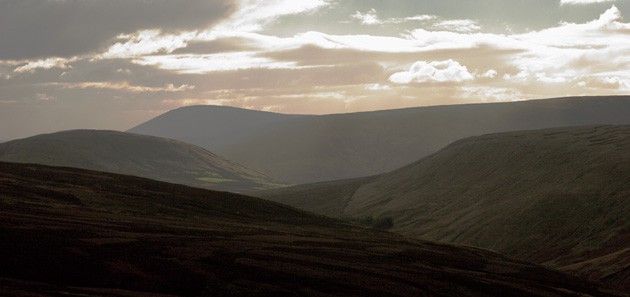
In the spring of 2009 seventeen occupied peregrine territories were recorded by the North West Raptor Group in the Forest of Bowland. One year later Natural England,(the government’s advisor on the natural environment) with-held licences which had permitted the group to monitor peregrines in this special moorland region for over thirty five years; just 4 years later fifteen of these historic territories had been abandoned leaving one successful breeding pair.
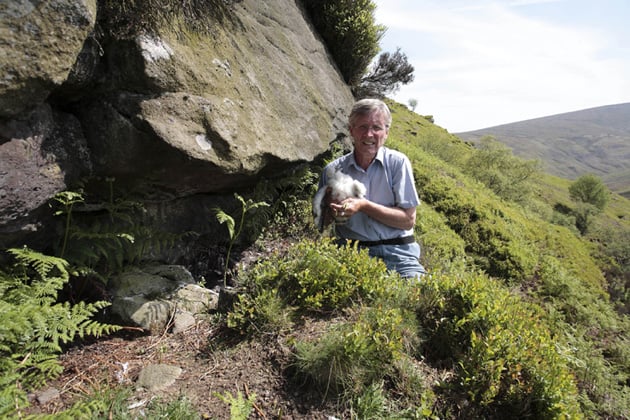
The NWRG had been warned persecution details together with reported incidents of poor field practice by at least one licensee highlighted on the Raptor Politics web site had caused embarrassment. The NWRG were further informed unless members signed a confidentiality agreement their licenses for use on the United Utilities estates would be revoked. Needless to say NWRG members would not sign such a restrictive and improper agreement.
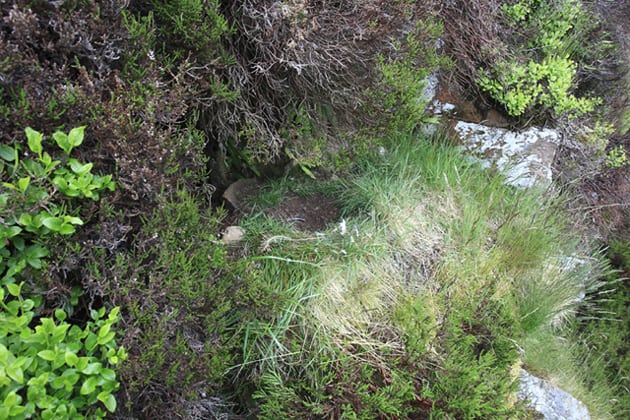
In the forty seven years I have been involved with raptor conservation in the North West of England, I have learned three important lessons. Firstly, red grouse shooting and birds of prey do not mix and I have serious doubt whether this position will change in my lifetime. Secondly, relationships with sporting estates are held in higher regard by Richard Benyon – the former Minister for the Natural Environment & Fisheries and Natural England – than the security of endangered raptors which the Minister and his Government’s Advisor have a statutory duty to protect. Thirdly, because of politics, the Hen Harrier, Peregrine and Goshawk in particular are just three raptor species being sacrificed, exterminated with impunity on SPA moorland in northernEngland where these birds should be safe but are not.
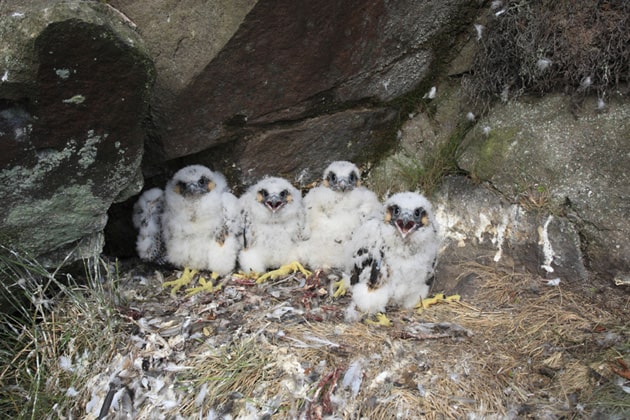
The Popular Handbook of British Birds explains the peregrine falcon occurs chiefly in open, more or less treeless country. In the breeding-season it frequents the vicinity of coastal or inland cliffs, moors and mountain-sides. This historic description of breeding habitats may have been accurate until the end of the 20thcentury but today – resulting from widespread persecution on moorland where driven red grouse are shot – this situation has changed. Because of this fact the hen harrier for the fist time in sixty years did not breed successfully in England this year. Peregrines have become a very rare migrant, almost entirely disappearing as a regular breeding species throughout England’s northern uplands where they receive short shrift.
Many reading these words both within the UK and abroadwill be shocked to learn there are now more nesting pairs of peregrines inside London than in the whole of theNorthern Pennines, theYorkshire Dales, theNorth Yorkshire Moors, theForest of Bowland, theDurham uplandsandDerbyshire’s Dark Peak. If you have any doubts, please examine the appalling details I have enclosed below which tells its own tragic story.
Fact-Peregrine are disappearing from England’s northern uplands because of persecution
-
In theNorthern Pennineshistorical territories once frequented by the peregrine have been reduced by persecution from 15 breeding pairs to just 4. This year 2 of these sites were unproductive and a third nest was robbed of a clutch of eggs. The last site was successful.
-
ThroughoutDerbyshire’s Dark Peakof the 11 territorial sites only three nesting pairs were successful, producing 5 young this year. One additional site was established just a few hundred yards outside the Peak boundary.
-
TheNorth YorkshireMoors. 2 historic territories no longer occupied, the area has potential for at least another 6 territories but being restricted by persecution.
-
TheYorkshire Dales,this year of the 13 historical upland territories examined, I am aware of only 2 sites which were productive fledging a total of 4 young.
-
TheDurham Uplands,12 historicterritorieslocatedon red grouse moors, not one territory currently occupied due to extensive persecution. (territories located away from grouse moors are more successful in Durham)
-
Lancashire’sForestof Bowlandhas witnessed an unprecedented peregrine population crash with only a single breeding success recorded this year. In the last 4 yearsfifteen peregrine territories have been found abandoned, resulting in the disappearance of at least thirty adult falcons that once occupied these sites.
Totals: Of the77 historicperegrine territorieswhich existed on red grouse moors in the 6 regions above, only 11 pairs remain that I am aware of.
In 2009, twenty five Bowland peregrine territories were examined by licensed members of the NWRG. Seventeen territories were found occupied, 6 of these sites failed following the disappearance of eggs and chicks. A total of eleven territories were productive fledging twenty four young. This result was considered by the NWRG to have been a very poor breeding season. Two female chicks vanished from a brood of 4 two days after the former Wildlife Crime Officer for Lancashire had invited gamekeepers, who were unaware of the nests existence, to witness the ringing of the 4 chicks.
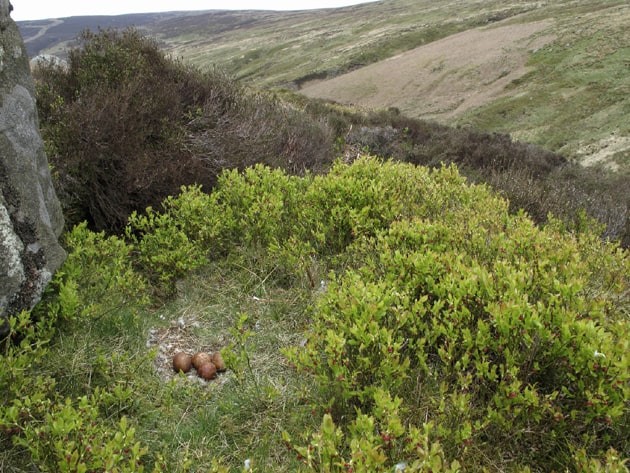
By 2011 the work undertaken by the NWRG was now being carried out by a small number of voluntary RSPB wardens who are also members of the recently established Bowland Raptor Study Group (BRSG). Unlike the NWRG, members of this new group agreed to sign the confidentiality agreement and are now licensed to monitor raptors throughout the whole of the Forest of Bowland. Compared to the seventeenterritories found occupied by the NWRG in 2009, only 9 territories located on moorland owned by United Utilities were monitored in 2011. Although 7 of these sites were occupied containing eggs, just 5 eggs hatched; 2 pairs were successful fledging 4 chicks. I find it difficult to comprehend why the additional ten territories at a higher risk established on Bowland’s private estates do not appear to have been monitored at all in 2011? Was this perhaps because these sites had already been destroyed?
2013: Forest of Bowland Peregrines Reduced toone successful Breeding Pair.
Working without licences, using telescopes to view nests, exercising common sense and a great deal of care to avoid any intentional disturbance, NWRG members checked twenty peregrine territories this season. To my surprise, only 4 territories were found occupied, two of which were ultimately found destroyed; just a single territory was successful this year. Was it a coincidence that in the 4 years following the removal of NWRG licences by the government’s advisor Natural England, fifteen of the territories occupied in 2009 had been abandoned by 2013? Let us not forget all 3 eagle owl nests under the watchful care of the Bowland Raptor Study Group were also found abandoned this year. A clutch of eggs from a fourth nest disappeared.
With such depressing factsas these – the question must be asked, why aren’t the RSPB, Natural England or the Northern England Raptor Forum commenting or acknowledging this indefensible state of affairs? Do they too, want to see the Forest of Bowland become a ‘raptor-free zone’? Why are crucial persecution details including missing eggs and chicks, together with the loss of so many adult peregrines that once occupiedthe fifteen abandoned territories being kept so secret?
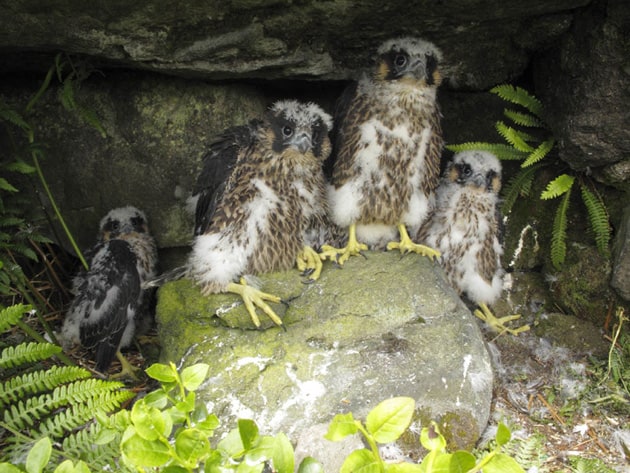
There is more to learn about the Forest of Bowland, a very special part of the Lancashire countryside; apart from being an Area of Outstanding Natural Beauty, moorland throughout this region is protected by aSite of Special Scientific Interestclassification (SSSi). In addition under theEuropean Wild Birds Directive, Bowland’s moorland has also been designated aSpecial Protected Area(SPA), which in theory at least but not in practice, should provide vulnerable species such as the Hen Harrier and Peregrine with enhanced protection.
As peregrines continue to disappear from red grouse moors, not only in the Forest of Bowland but also from a majority of northern England’s uplands where grouse are shot, important SPA legislation is being ignored by estate landowners as well as the Minister in charge of Defra and Natural England. The disappearance of the Hen Harrier as a breeding species is a prime example of how England’s moorlands are being mismanaged and legislation introduced to protect raptors completely disregarded.
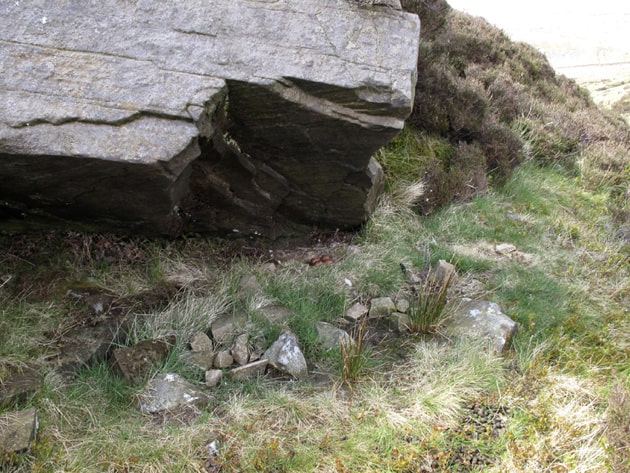
Can the abandonment of fifteen historic peregrine territories in such a short period be a coincidence? I certainly don’t think so. Ask yourself, why so many peregrine territories have been abandoned without so much as a whisper from those tasked with conserving protected fauna and flora within Lancashire’s Forest of Bowland? Who should take responsibility for what has been allowed to happen? What purpose has now been served by revoking licenses provided to the one raptor group who may have made a difference but were prevented from doing so because of politics?
Terry R. Pickford
North West Raptor Protection Group (1967)
Terry Pickford
Throughout the last 47 years I have been involved in the conservation and protection of some of England’s rarest birds of prey. In 1967, in joint cooperation with the RSPB, the Nature Conservancy, now English Nature, I became a founder member of England’s first Raptor Study and Protection Group (The North West Raptor Group). Since 1974 my field work with raptors has been licensed by English Nature. I was a member of the UK Government Raptor Working Group which sat from 1995 to 2000. I am a qualified BTO licensed ‘A’ ringer permitting me to ring a variety of protected birds of prey at their nesting sites, including Golden Eagle (Scotland), Osprey, Red Kite, Goshawk, Peregrine Falcon and Barn Owl (England.) Between the years 1966 - 1976 I worked primarily throughout Speyside under the direction of the Hon. Douglas Weir (RSPB) where my work involved monitoring both the Golden Eagle and Peregrine Falcon populations in the Speyside area. In 1977 my work returned to England, where I began to monitor Peregrine nesting activity in both the Lake District National Park and the Forest of Bowland in Lancashire. During the past 40 years my activities associated with the peregrine falcon have been featured in several television documentaries. In 1986 my conservation work was featured in Central Televisions’ Nature Watch series hosted by Julian Petiffer. In the early 1980’s I was also involved in the reintroduction of the Peregrine Falcon (taken under licence from Scotland by a member of SNH), together with other falcons propagated in captivity back into the natural environment inside the Czech Republic, subsequently bringing about the recolonisation of peregrines in that country. In 1999 I decided to concentrate full time presenting wildlife illustrated lectures dealing specifically with raptors, their environment and protection. In 2002 at the invitation of the Polish Sea Eagle Conservation Committee, I became one of only a small handful of photographers permitted to photograph the White-tailed Sea Eagle inside Poland’s Sierakow Forest where I had been issued with the appropriate licence. The project lasted for 7 years until 2008. In the summers of 2011 and 2012 I returned to Scotland where I worked under a Scientific licence issued by Scottish Natural Heritage and the BTO to monitor and ring Golden Eagle in the Highland region. Most of this field work has been concentrated in the Blackmount and Glen Coe areas.






Leave a Reply